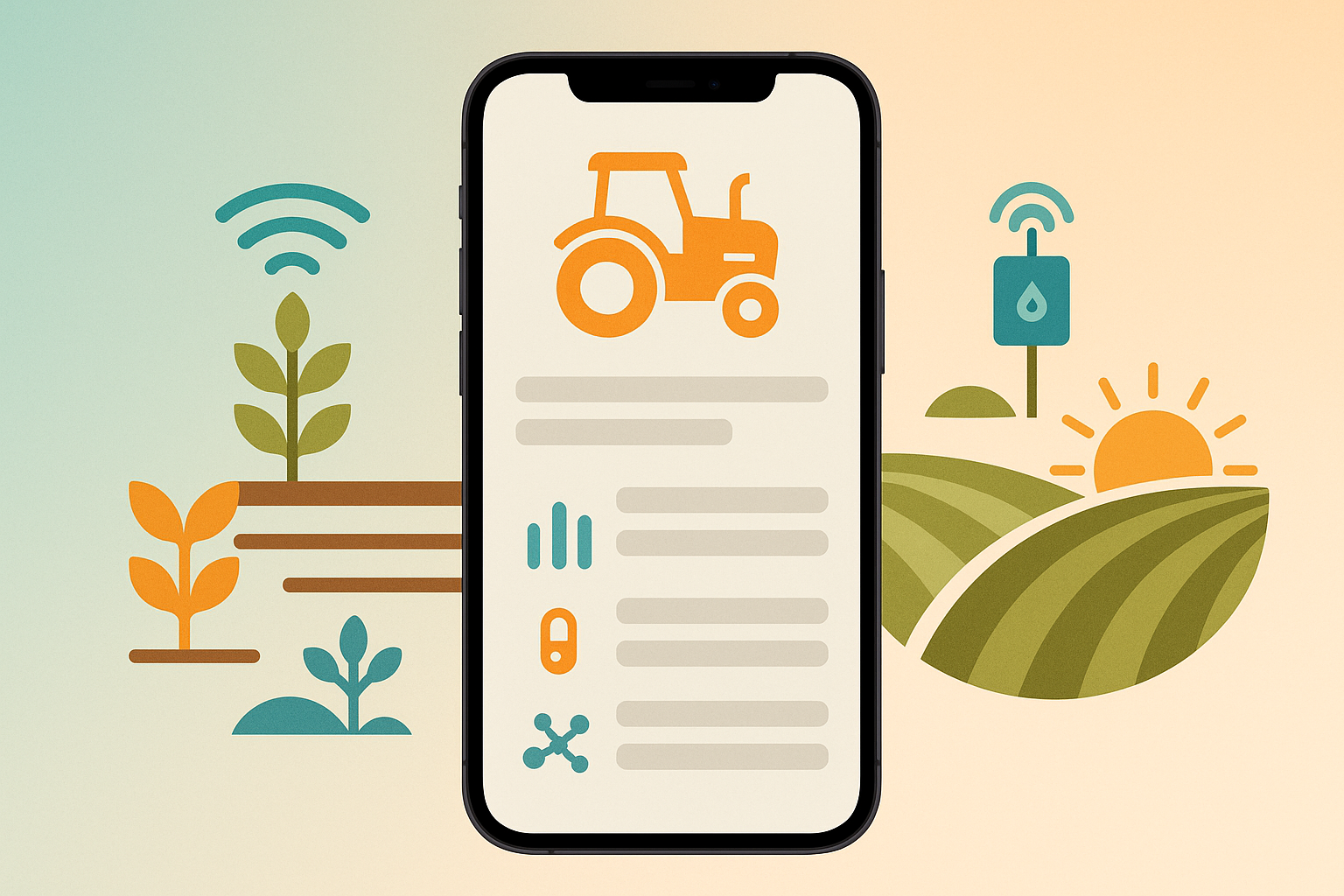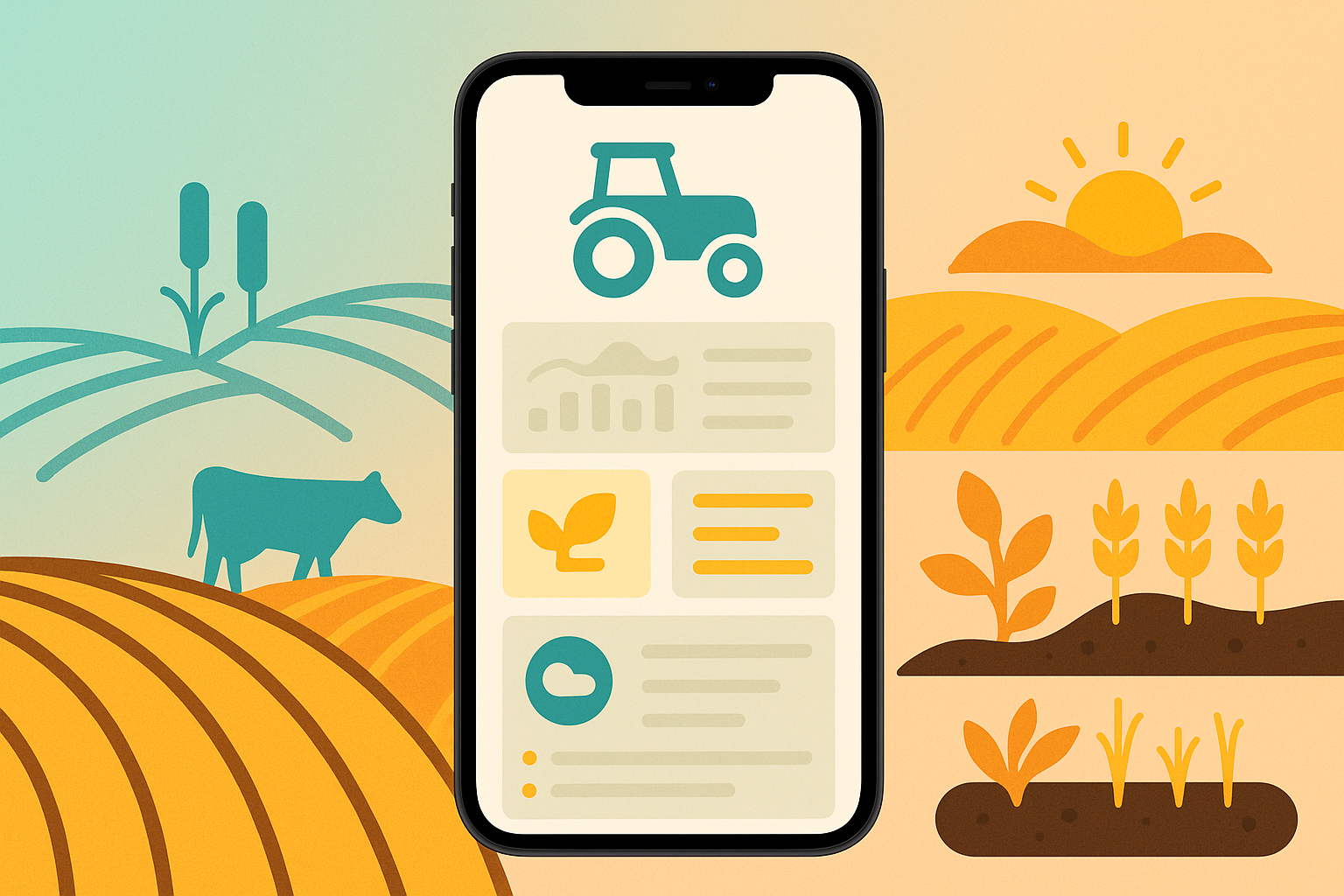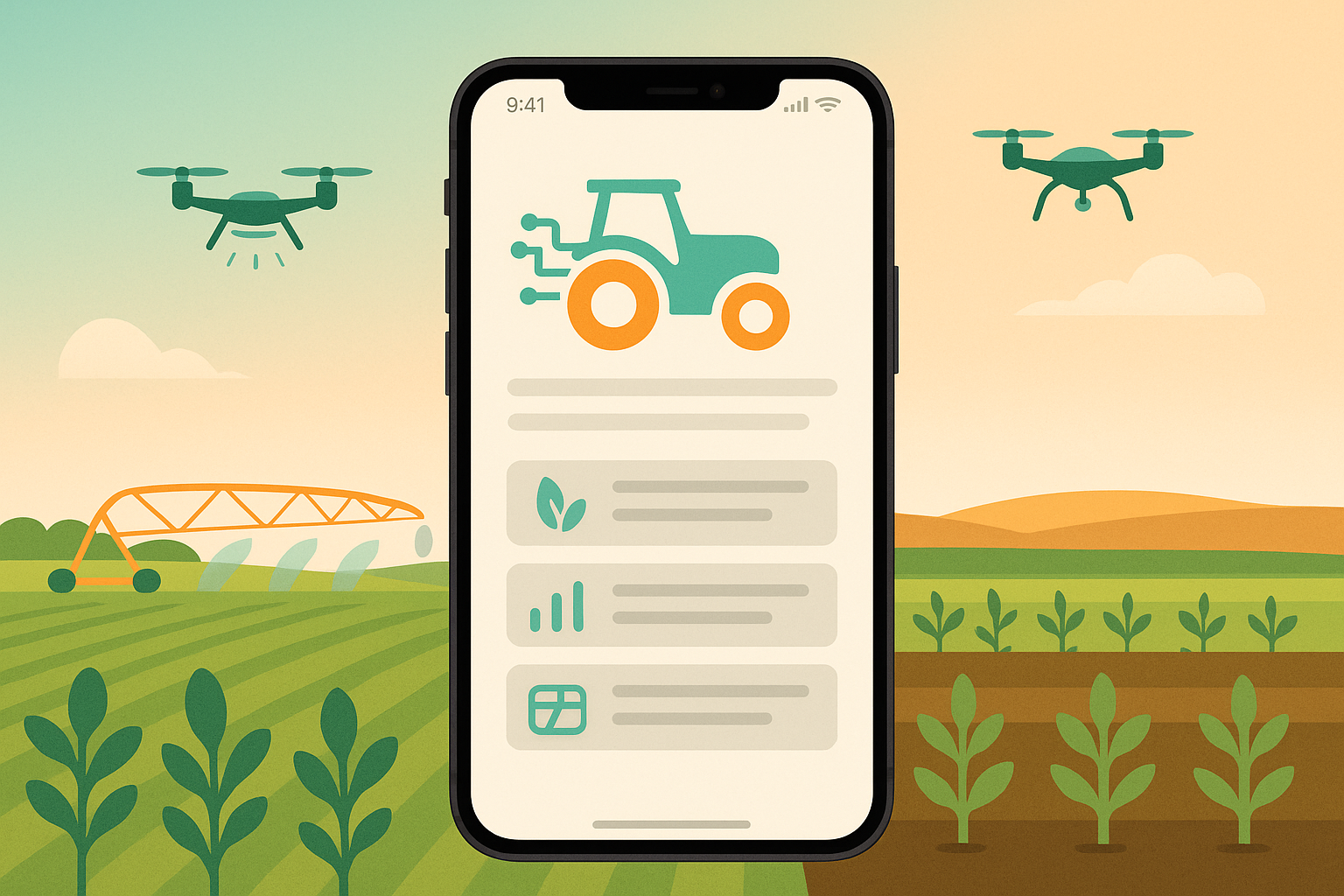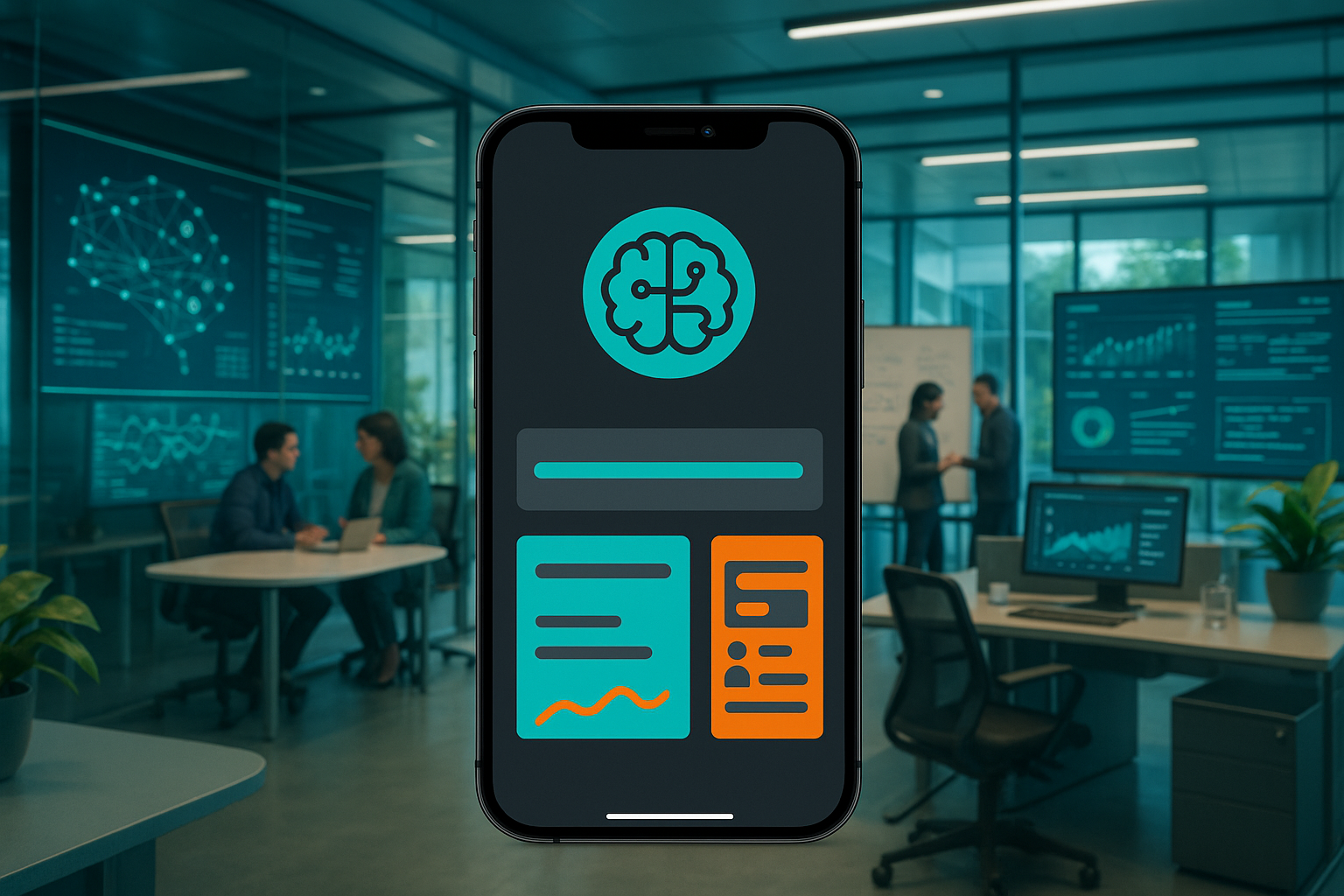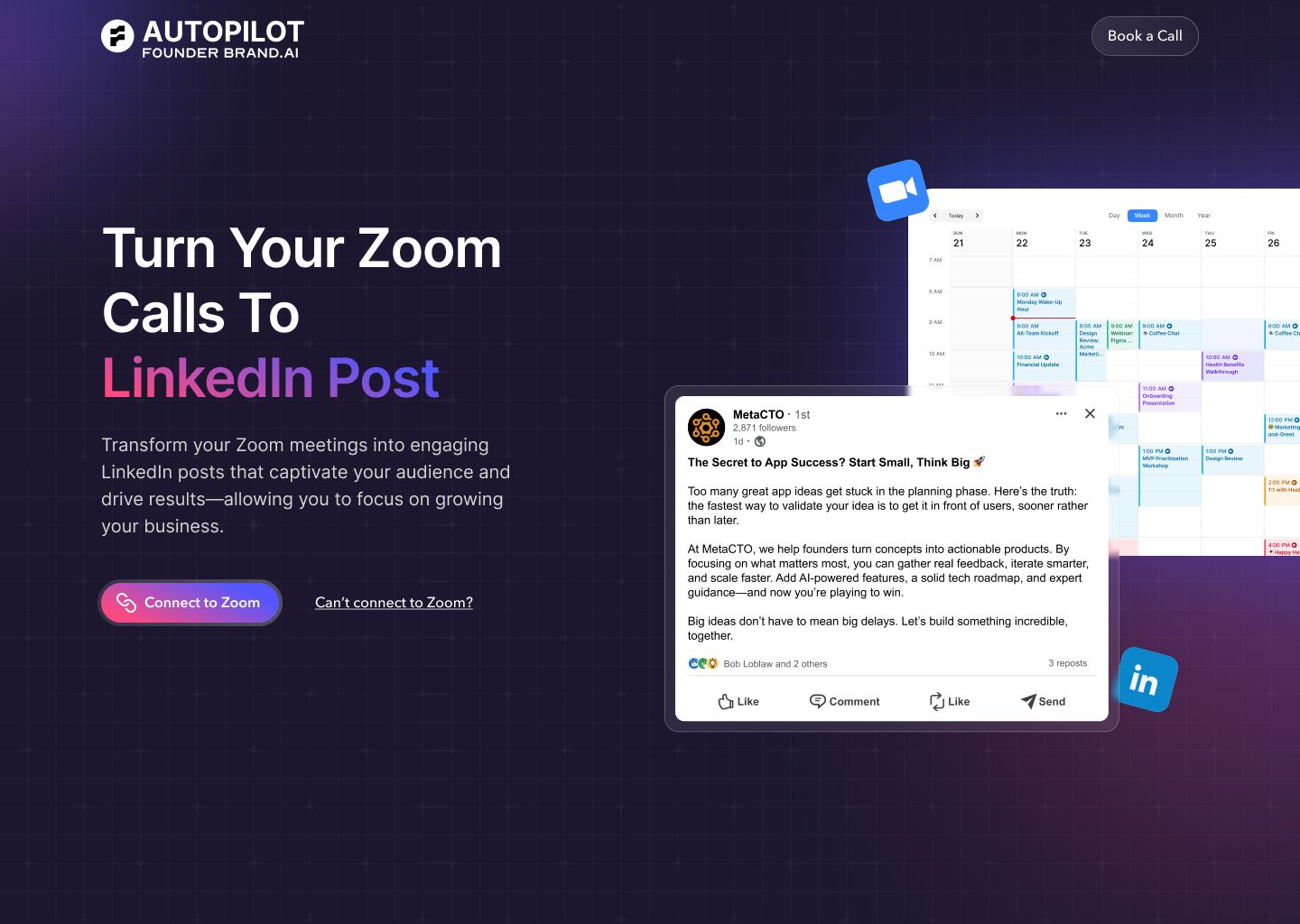Introduction
The agricultural industry is undergoing a profound transformation, driven by a technological revolution that promises to redefine how we grow our food. At the heart of this change are agriculture apps, sophisticated tools that empower farmers, agronomists, and agribusinesses to make smarter, data-driven decisions. However, the path from a great idea to a successful agriculture app is fraught with complexity. Developing a robust, reliable, and secure agtech solution requires a deep understanding of not only software engineering but also the unique challenges of the agricultural domain, including hardware integration, advanced data analytics, and in-field connectivity.
Attempting to build such a specialized application in-house can quickly become an overwhelming endeavor, consuming vast resources with no guarantee of success. The technical hurdles are significant, from integrating a diverse array of IoT sensors to building the powerful AI models needed to turn raw data into actionable insights.
This article serves as a comprehensive guide to agriculture app development. We will explore what defines a modern agriculture app, dissect the significant challenges of in-house development, categorize the different types of apps available, and provide a realistic cost estimate for building one. Furthermore, we will introduce the leading agriculture app development companies that can navigate these complexities for you.
As a top US AI-powered mobile app development firm, we at MetaCTO have over two decades of experience turning ambitious concepts into market-leading applications. We understand the intricate dance between cutting-edge technology and real-world agricultural needs. This guide will leverage that expertise to provide you with the essential knowledge needed to embark on your agtech journey.
What is an Agriculture App?
At its core, an agriculture app is a software application designed for mobile devices like smartphones and tablets that assists with various farming operations. However, this simple definition belies the incredible sophistication of modern agtech solutions. Today’s apps are no longer just simple record-keeping tools; they are powerful platforms that leverage cutting-edge technologies like the Internet of Things (IoT), Artificial Intelligence (AI), and Machine Learning (ML) to bring a new level of precision and efficiency to farming.
The integration of AI and ML has been a game-changer, giving developers the ability to create apps that are more personalized, intuitive, and engaging. Ag professionals now have an abundance of AI-based apps that allow them to perform their jobs more effectively. These technologies have unlocked the potential of the vast amounts of agricultural data being generated daily, transforming it into actionable insights that can be accessed directly from a mobile device.
AI has significantly improved agricultural apps in several key areas:
- Predictive Analytics: AI models can analyze historical and real-time data to forecast crop yields, predict pest and disease outbreaks, and anticipate the best times for planting and harvesting.
- Personalized Recommendations: By processing data on soil conditions, weather patterns, and crop health, AI can provide tailored recommendations for irrigation, fertilization, and pest control, optimizing resource use.
- Real-Time Data Processing: AI enables the immediate analysis of data from in-field sensors and drones, allowing farmers to identify and address issues like nutrient deficiencies or equipment malfunctions before they escalate.
Features like dynamic crop management protocols, advanced pest and disease detection, and weather-driven recommendations are prime examples of how AI has empowered farmers to make more informed decisions. This has also taken the user experience to another level, with AI helping to streamline UI/UX design, speed up development, and automate complex tasks in the background. The result is a much better user experience where farmers get the answers they need faster than ever before.
Looking ahead, several trends are shaping the future of agriculture apps:
- Conversational AI: A significant trend is the shift from traditional interfaces to more voice and chat capabilities. White-labeled chatbots, primed with specific company or product information, are becoming more common, allowing users to interact with apps more naturally.
- Data Integration: Collaborations are emerging to integrate diverse data sets within a single app, enabling them to address a broader range of user questions and provide more holistic insights.
- Generative AI: Generative AI holds immense promise for agriculture due to the industry’s high volume of unstructured data (e.g., soil characteristics, weather variables, planting dates). This technology can process large, complex data sets to uncover hidden patterns and solutions.
- Automation and Autonomy: The next frontier for AI is moving from informing farmers to autonomously making decisions and tasking equipment to execute them. With the rise of advanced drones, next-generation sensors, and AI-driven testing, agriculture is moving toward a fully automated management approach through apps, significantly reducing manual intervention and optimizing efficiency across the entire farm cycle.
Reasons It Is Difficult to Develop an Agriculture App In-House
While the benefits of a custom agriculture app are clear, the development process is uniquely challenging. Attempting this complex task without a specialized partner can lead to costly delays, budget overruns, and a final product that fails to meet expectations. Here are the primary reasons why in-house agriculture app development is so difficult.
Hardware and Sensor Integration (IoT)
A core component of modern precision agriculture is the Internet of Things (IoT). To gather the necessary data, apps must connect with a wide range of physical devices.
- Sensor Selection and Customization: Developers must choose the right sensors to collect specific types of information, such as soil moisture, pH levels, nutrient content, and weather conditions. In many cases, off-the-shelf sensors may not suffice, requiring the custom design and manufacturing of hardware. The quality of these sensors is paramount, as it directly impacts data accuracy and reliability.
- Durability and Maintenance: Agricultural sensors are deployed in harsh outdoor environments. They are exposed to extreme temperatures, high humidity, wind, dust, and potential damage from machinery. The hardware must be incredibly durable and easy to maintain or replace to avoid frequent downtime and costly field visits. Building and managing such a resilient hardware ecosystem is a significant engineering challenge.
Powerful Data Analytics and AI/ML
Collecting data is only the first step. The true value of an agriculture app lies in its ability to analyze that data and provide actionable insights.
- Specialized Expertise: Raw sensor data, on its own, is of little use. Unlocking its potential requires powerful data analytics capabilities, predictive algorithms, and machine learning models. Developing these systems requires a team of data scientists and AI engineers with expertise in agricultural science—a rare and expensive combination of skills.
- Model Training and Accuracy: Machine learning models must be trained on vast, high-quality datasets to be effective. Data accuracy is critical, and it depends on the reliable performance of the IoT devices in the field. Any disruption in data collection due to sensor malfunction or environmental factors can lead to inaccurate models and flawed recommendations.
Infrastructure, Connectivity, and Security
An agriculture app must be supported by a robust and secure backend infrastructure capable of handling massive data loads and providing reliable connectivity across vast, often remote, areas.
- Scalable Infrastructure: The system must be able to process and store data from thousands of sensors in real-time. This requires a solid internal infrastructure that is both powerful and scalable.
- Connectivity Challenges: Farms are often located in areas with poor cellular or Wi-Fi coverage. Ensuring that each connected device has enough wireless range to communicate with other devices and send data to a central server is a major hurdle. The connection must be reliable and capable of withstanding bad weather to ensure non-disruptive operations. The fact that many IoT devices use varying connection protocols further complicates this.
- Pervasive Security Risks: Precision agriculture involves working with large sets of sensitive data, creating numerous potential security loopholes for data theft and hacking. Farm machinery, which increasingly transmits data and connects to the internet, often has little to no security protection. Securing the entire ecosystem—from the sensor in the field to the cloud server—is a complex but absolutely critical task to prevent data breaches or unauthorized control of autonomous equipment.
Field-Ready User Experience (UX)
Finally, an agriculture app must be designed for its unique user and environment.
- On-the-Go Usability: The application must be tailored for use in the field. Farmers and farm managers need to access information quickly and easily, whether they are on-site using a smartphone or remotely on a desktop computer. The interface must be intuitive, with large, easily tappable elements that are usable with gloves or in bright sunlight.
- Offline Functionality: Given the connectivity challenges, the app must be able to function offline. A user should be able to input data, view maps, and access critical information without an active internet connection, with the app syncing automatically once connectivity is restored. Building this seamless online/offline experience requires sophisticated software architecture.
Navigating these challenges requires a multidisciplinary team with deep expertise in hardware engineering, AI/ML, cloud infrastructure, cybersecurity, and UX design. For most organizations, partnering with a specialized AI development agency is the most efficient and effective path to success.
Different Types of Agriculture Apps
The agriculture app market is diverse, with solutions tailored to specific needs and operational focuses. Based on a 2025 review of over 30 leading apps, they can be broadly categorized into three main types: Precision Ag, Farm Management, and Customer Service & Collaboration.
Precision Agriculture Apps
Precision ag apps are at the forefront of the agtech revolution. They use data from IoT sensors, drones, and satellites, often combined with AI, to enable highly accurate and targeted farming practices. The goal is to optimize the application of resources like water, fertilizer, and pesticides, thereby increasing yield, reducing costs, and minimizing environmental impact.
| App Name | Key Features | Availability |
|---|---|---|
| AGMRI | Combines AI-driven analytics with high-resolution imagery to identify yield-limiting issues. Offers alerts on emergence, weeds, crop stress, and nutrient deficiencies. | iPhone, iPad |
| xarvio FIELD MANAGER | Provides field-zone specific variable application maps for fungicides and fertilizer. Uses satellite imagery and agronomic modeling to give reliable advice and optimal crop protection timing. | Android, iPhone, iPad |
| Orbit | An AI-driven scouting app using high-resolution, near-daily satellite imagery to monitor crop health, pinpoint problem areas, and provide precise irrigation schedules and variable rate fertilizer plans. | Android, iPhone, iPad |
| Insights by Prospera | Uses imagery and AI to virtually scout fields, alerting users to crop health and irrigation issues. Helps reduce input costs by focusing on relevant areas. | Android, iPhone |
| Phytech | Integrates direct plant-sensing data with an AI platform to deliver actionable recommendations on irrigation and nutrition, helping farmers avoid stress and optimize water delivery. | - |
| Climate FieldView | An integrated suite of digital tools to collect field data, monitor crop performance, and build customized fertility and seeding plans to manage field variability. | Android, iPhone, iPad |
| GeoPard | A cloud-based mobile app that creates Variable Rate (VR) prescription maps for fertilizing, seeding, and irrigation. Offers automated management zones and satellite monitoring. | Android, iPhone, iPad |
Farm Management Apps
These apps provide a comprehensive, big-picture view of a farm’s operational and financial health. They serve as a central hub for organizing records, managing workflows, and analyzing profitability. They integrate data from various sources to give farmers the insights needed for strategic planning and decision-making.
| App Name | Key Features | Availability |
|---|---|---|
| Bushel Farm | Centralizes farm records like field maps, scouting notes, grain sales, and land agreements. Powerful automation transforms records into insights on cost of production and profitability. | Android, iPhone, iPad |
| FarmCommand | A digital farm data management app with tools for in-field use, including weather forecasts, imagery-derived maps, automatic crop health change detection, and a scouting tool. | Android, iPhone, iPad |
| Traction Mobile | A tool for seamless field task management. Features real-time inventory tracking, quick access to field profitability, and an import queue for connected machine tasks. | iPhone, iPad |
| Agworld | A collaborative platform that allows growers, consultants, and staff to work together. Features document management, farm maps, and tools to capture and share data, even offline. | iPad, iPhone |
| Sirrus | Helps agronomists and farmers collaborate on decisions. Allows users to scout crops, create and share recommendations, and perform soil sampling using a grid or zones. | Android, iPhone, iPad |
Customer Service & Collaboration Apps
This category of apps focuses on strengthening the relationships between farmers and their network of partners, including retailers, advisors, consultants, and manufacturers. They create digital channels for communication, support, and commerce, streamlining interactions and improving efficiency for everyone involved.
| App Name | Key Features | Availability |
|---|---|---|
| AGvisorPRO | Connects farmers in real-time with a wide network of trusted professionals and companies for remote advice and knowledge development, both for hire and for free. | Android, iPhone, iPad |
| AgriSync | Enables farmers and advisors to connect and resolve support issues. Features real-time video support, allowing advisors to see what the farmer sees in the field. | Android, iPad, iPhone |
| GROWERS | A free app for farmers to digitally request farm input products directly from their retailers, streamlining the entire procurement process. | - |
| AgVend Grower Portal | A custom-branded information and commerce app for ag retailers that allows their grower customers to pay invoices, access order history, and request product prices online. | - |
| FieldAlytics Engage | Strengthens the service provider-grower relationship by housing essential information in a single source, allowing growers to review work orders, view spatial data, and see weather reports. | - |
Cost Estimate for Developing an Agriculture App
Estimating the cost of developing an agriculture app requires careful consideration of its complexity, features, and long-term support needs. The total investment can vary significantly, but understanding the typical cost breakdown can help you budget effectively. Below are industry estimates for building a farm management app.
Core Development Costs
The primary cost is determined by the scope and complexity of the features you wish to include.
| Software Complexity | Estimated Cost | Description |
|---|---|---|
| Basic Agriculture Software | $10,000 – $50,000 | Includes a limited set of essential features, such as basic record-keeping, field mapping, and weather tracking. Suitable for a Minimum Viable Product (MVP) to test the market. |
| Mid-Range Agriculture Software | $20,000 – $70,000 | Offers a moderate range of features, potentially including scouting tools, basic analytics, and simple integrations with other platforms. |
| Advanced Agriculture Software | $40,000 – $200,000+ | A comprehensive, feature-rich platform with advanced capabilities like AI-driven predictive analytics, IoT sensor integration, variable rate prescription mapping, and robust reporting. |
Additional Essential Costs
Beyond core development, several other services are critical for creating a polished and successful application.
| Service | Estimated Cost | Description |
|---|---|---|
| Design and User Experience (UX/UI) | $5,000 – $15,000 | This covers the creation of an intuitive, user-friendly interface that is optimized for in-field use. Good design is crucial for user adoption and satisfaction. |
| Testing and Quality Assurance (QA) | $5,000 – $20,000 | Rigorous testing is necessary to identify and fix bugs, ensure data accuracy, and verify that the app performs reliably across different devices and network conditions. |
| Annual Maintenance and Updates | $10,000 – $30,000 | Technology is constantly evolving. This recurring cost covers ongoing maintenance, security patches, updates to support new operating systems, and the addition of new features over time. |
| Annual Training and Support | $5,000 – $10,000 | Providing training materials and customer support helps ensure that users can effectively leverage all the app’s features, driving engagement and loyalty. |
It’s important to view these figures as estimates. The final cost will depend on your specific requirements, the technology stack chosen, and the development partner you work with. A thorough product discovery phase is essential to define the scope and establish a more precise budget.
Top Agriculture App Development Companies
Choosing the right development partner is the single most important decision you will make when building an agriculture app. You need a team with proven expertise in mobile development, AI, IoT, and a nuanced understanding of the agricultural sector. Here are some of the top companies in the space.
1. MetaCTO
At MetaCTO, we specialize in building complex, AI-powered mobile applications. With over 20 years of experience and more than 120 successful projects launched, we possess the deep technical expertise required to navigate the unique challenges of agtech development. We handle every step of the process, from initial strategy and validation to building, growing, and monetizing your app. Our Rapid MVP Development service can take your idea to a market-ready product in as little as 90 days.
Integrating sophisticated technologies like AI and IoT into a mobile app is notoriously difficult. It requires:
- Ensuring Data Accuracy: The performance of AI models is entirely dependent on the quality of the data they are trained on. We know how to build systems that account for the harsh environmental conditions that can affect IoT sensor performance, ensuring a reliable stream of accurate data.
- Building Robust AI Models: Our team of AI experts can develop and train custom machine learning models that analyze agricultural data to provide the predictive analytics and personalized recommendations your users need.
- Architecting for Security: Smart agricultural systems are prime targets for cyberattacks. We build security into the foundation of your application, protecting sensitive data and preventing unauthorized access to connected machinery.
By partnering with us, you gain access to a team that has been through it all. We transform frustrating technical setbacks into a clear path forward, ensuring your project is built right from day one.
2. Folio3 AgTech
Folio3 AgTech is a leader in providing comprehensive software solutions for modern farms. They are known for their deep integration with AI, IoT, and cloud-based solutions.
- Offers AI-driven insights for decision-making.
- Provides specialized ERP and CRM systems tailored for agricultural needs.
- Delivers scalable solutions suitable for farms of all sizes.
3. Trimble Ag Software
Trimble offers a robust suite of tools for precision farming, fleet management, and farm analytics. Their solutions are designed to help farmers optimize workflows and enhance productivity.
- Provides precision agriculture tools for crop monitoring.
- Features fleet management for efficient use of farm machinery.
- Enables real-time data collection for actionable insights.
4. Conservis
Conservis specializes in farm data management and is an excellent choice for row farming operations. Their tools simplify operational workflows and boost efficiency.
- Features for crop planning and resource management.
- Offers detailed work order and task management.
- Provides collaborative features to improve team communication.
5. Ag Leader Technology
Ag Leader Technology has made its name with GPS-based precision farming systems. Their technology helps farmers boost yields by making data-driven adjustments.
- Known for variable rate technology for resource optimization.
- Offers advanced, GPS-based field mapping.
6. Agworld
Agworld stands out as a collaborative platform that connects farmers, retailers, and advisors. It excels in promoting transparency and accountability across the agricultural supply chain.
- Tools for in-season planning, execution, and monitoring.
- Advanced data analytics for operational oversight.
- Seamless collaboration between retailers and farmers.
7. Croptracker
Croptracker offers a robust suite of crop management tools with a focus on compliance and record-keeping. It is popular among farmers who need complete visibility into their crop cycles.
- Features for compliance and record-keeping to meet regulatory requirements.
- Sensor integration for real-time crop monitoring.
Conclusion
The journey into agriculture app development is both exciting and demanding. As we’ve explored, modern agtech solutions are far more than simple digital tools; they are complex ecosystems that integrate IoT hardware, process massive amounts of data, and leverage sophisticated AI to deliver transformative insights. We’ve seen the significant challenges that make in-house development a perilous venture, from ensuring sensor durability in the field to building the secure, scalable infrastructure required to power it all.
We have also categorized the diverse landscape of apps—from precision ag solutions that optimize resource use to farm management platforms that provide a holistic operational view and collaboration apps that connect the entire agricultural community. Understanding these types, along with the associated development costs, provides a solid foundation for planning your own project.
Ultimately, the success of your agriculture app hinges on finding a development partner with the specialized expertise to navigate this complex terrain. Building a powerful, reliable, and user-friendly application requires a deep understanding of mobile engineering, AI, IoT, and the unique demands of the agricultural industry.
If you are ready to bring your vision for a smarter, more efficient farm to life, the next step is to talk with an expert.
Talk with an agriculture app expert at MetaCTO to integrate advanced technology into your product.
